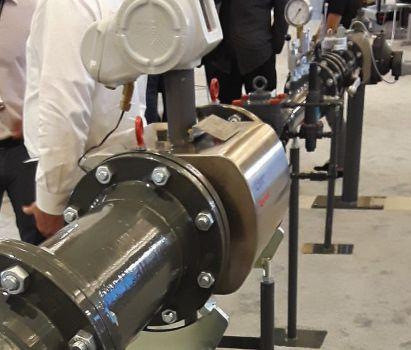
3 minute read
How to operate manufacturing remotely
Jason Urso, Honeywell Process SolutionsJason Urso,
Remote operations
Advertisement
Address five areas to improve remote operations, of growing importance to keep manufacturing sites running.
M
More
Industrial organizations are striving to keep workers and communities safe and healthy and contending with the COVID-19 effects to the economy, to supply chains and operations. As the pandemic spreads, plant owners/operators seek ways to change how they work. This includes refineries, chemical plants and manufacturing facilities. With the loss of human assets from the pandemic and retiring of experienced workforce, it has become clear the on-site operating model must change quickly.
1. Benefit from digitization
Digital effectiveness is key to staying ahead in today’s manufacturing environment. An emphasis on digital asset and process management will enable plant operating companies to achieve new levels of efficiency, productivity and safety. Tools include the latest technologies in sensors, connectivity, data capture, visualization and advanced analytics. Activities such as remote monitoring and operations, condition-based and predictive maintenance and real-time operator intelligence can help. Transition to remote plant operations is made easier with secure digital tools. Remote monitoring and operations software can be cybersecure without increasing plant risk.
2. Evaluate remote operations
INSIGHTS To help industrial organizations meet their business objectives, leading automation suppliKEYWORDS ers have developed innovative remote operaCOVID-19 safety, remote tions solutions, which provide the expertise, monitoring, manufacturing modernization Five areas can help remote manufacturing. skills and technology capabilities customers need to operate in a difficult business climate. Remote operations help with running Develop a strategy; look at complex manufacturing plants and relies on services, cybersecurity. a modern automation infrastructure. Using CONSIDER THIS Updated systems help remote manufacturing data from process or assets, plant personnel can manage daily production, maintenance and safety and improve multiple sites. They connections, processes can operate the plant, track production taras part of the COVID-19 gets, monitor asset health, and create scenarios response. to determine the effect of operational changes ONLINE prior to implementation. Remote capabilities If reading the digital edition, click on the headline for more www.controleng.com/magazine supporting installed automation systems, networks and devices, and migrations.
See more COVID-19 impacts 3. Use safety, digital, monitoring
www.controleng.com/ Remote operations and support strategy manufacturer-health-wellness/ to lower worker risk and comply with social
Wireless process transmitters can help remote operations, as shown at the Honeywell Users Group Americas, June 2019. Courtesy: Mark T. Hoske, CFE Media and Technology
distancing guidelines may require reducing the number of onsite employees. This will help protect workers who are onsite and keep operations running. It’s important to support them with advanced safety equipment and use tools such as digital video systems for the facility’s security as well as monitoring access control systems, so it’s clear who is on site.
Physical equipment and devices can be remotely monitored with a secure app, giving plant operators visibility of critical processes on a mobile device.
4. Use services for remote operations
Technical service and support can be performed remotely, including remote consultation and maintenance and video collaboration and troubleshooting. With a wearable device, workers can help the remote team identify issues and troubleshoot in real time.
During a production problem, team members can access systems and collaborate to solve the matter remotely. This helps plant personnel perform essential tasks with the knowledge and insights required to do the job correctly and maintain operational uptime.
5. Update controls, cybersecurity
Modernization can be achieved through plant automation and cybersecure software updates. Experience has shown remotely-operated migration methods for upgrading control systems offers lower risk, flawless execution and lower costs.
A remote controls modernization can minimize risk, time and effort in field and improve a migration experience. This approach can reduce cycle time by up to 80%, lower operational cost by as much as 20% and improves migration productivity by at least 60%, with the latest cybersecurity and process control improvements. Virtual training using augmented reality (AR) technology can enhance skillsets with an “on-call” operator where needed. ce
Jason Urso is chief technology officer for Honeywell Process Solutions. Edited by Mark T. Hoske, content manager, Control Engineering, CFE Media and Technology, mhoske@cfemedia.com.





